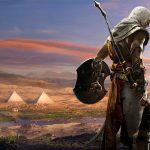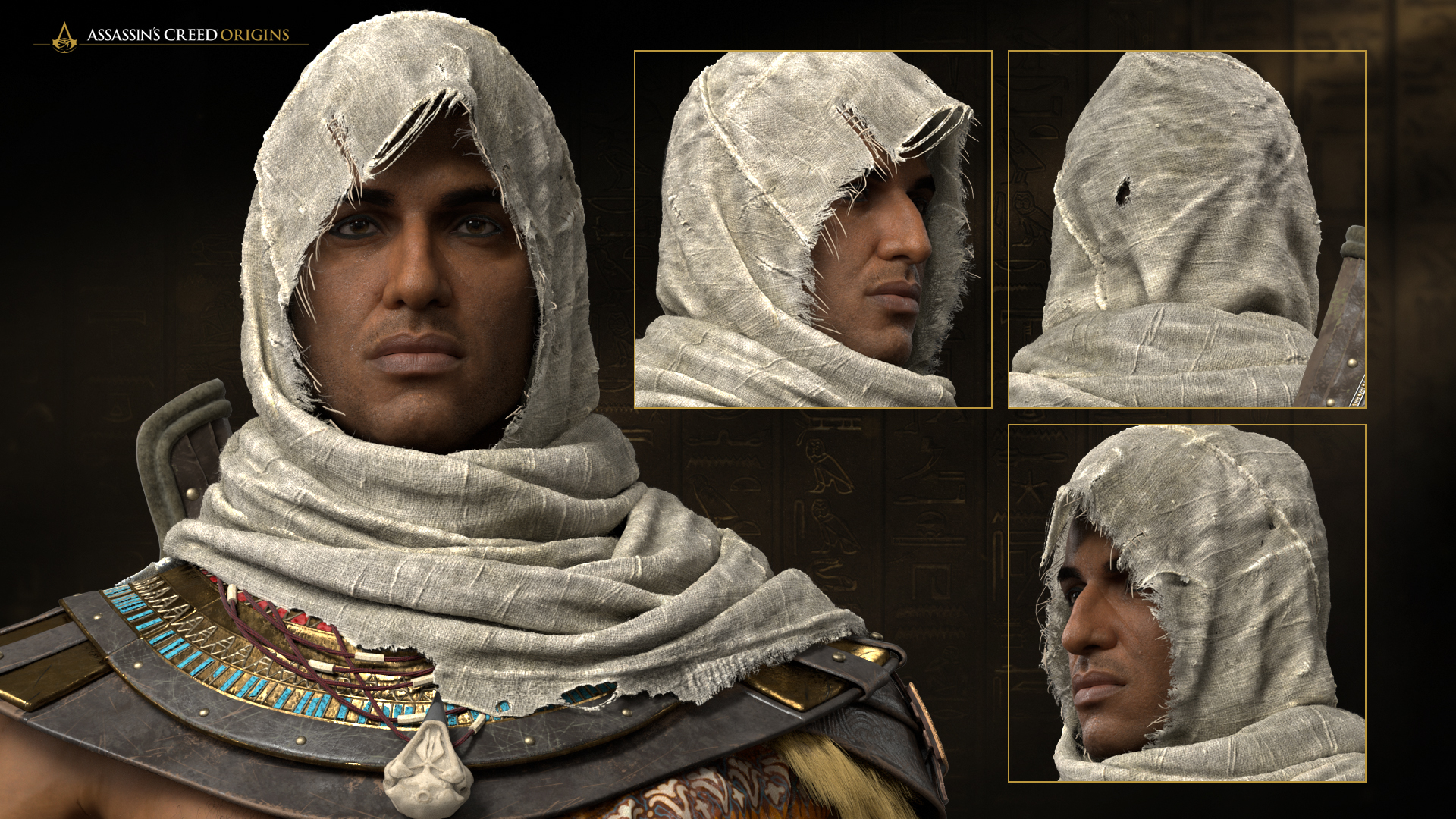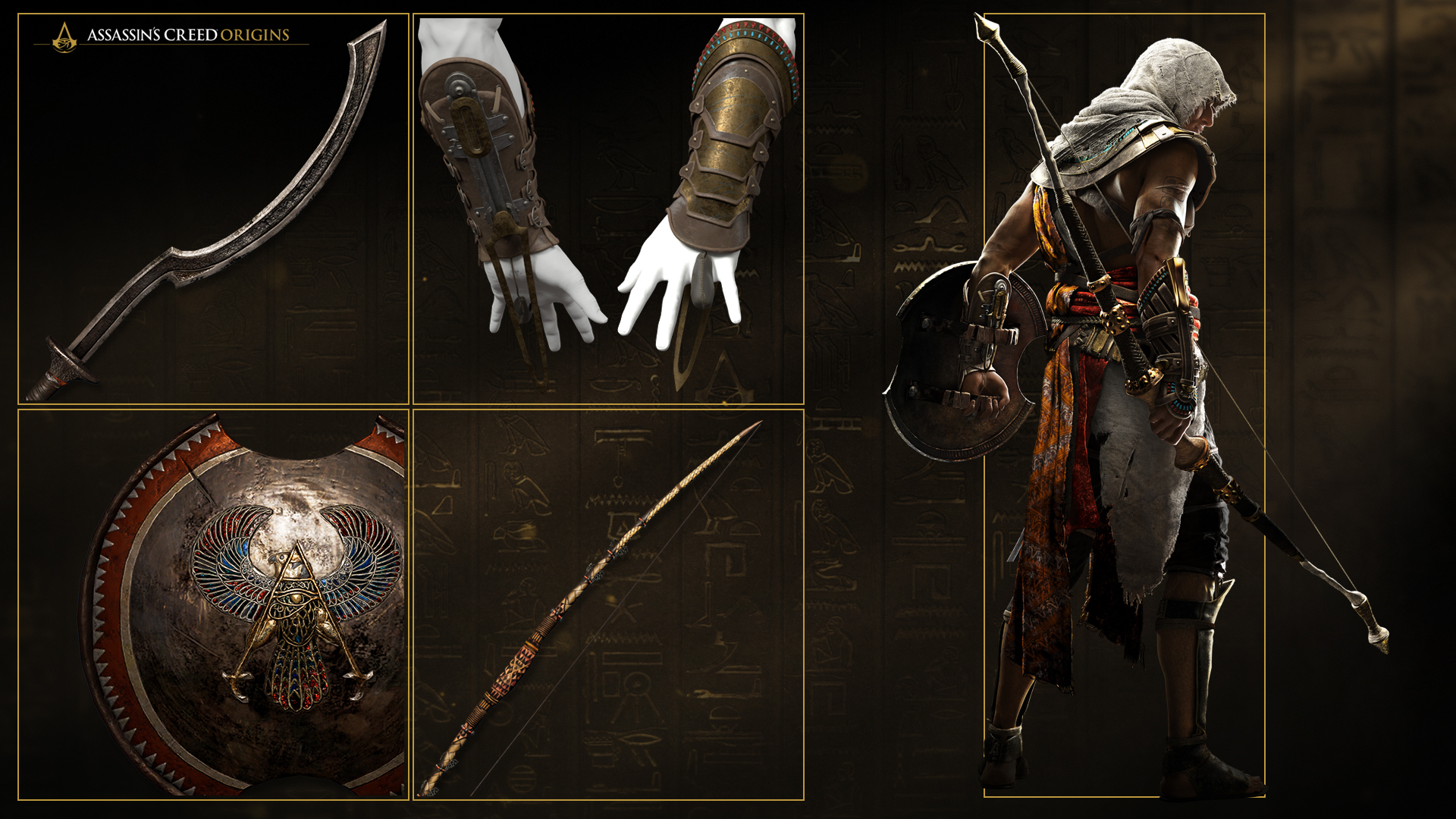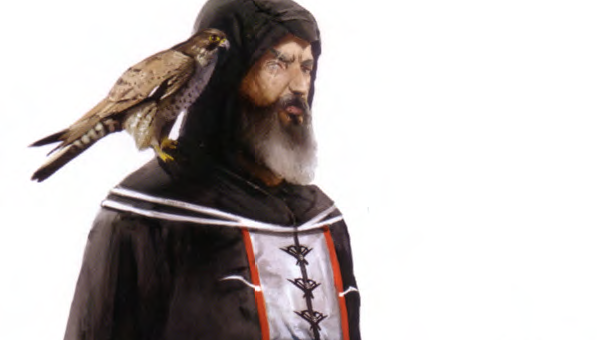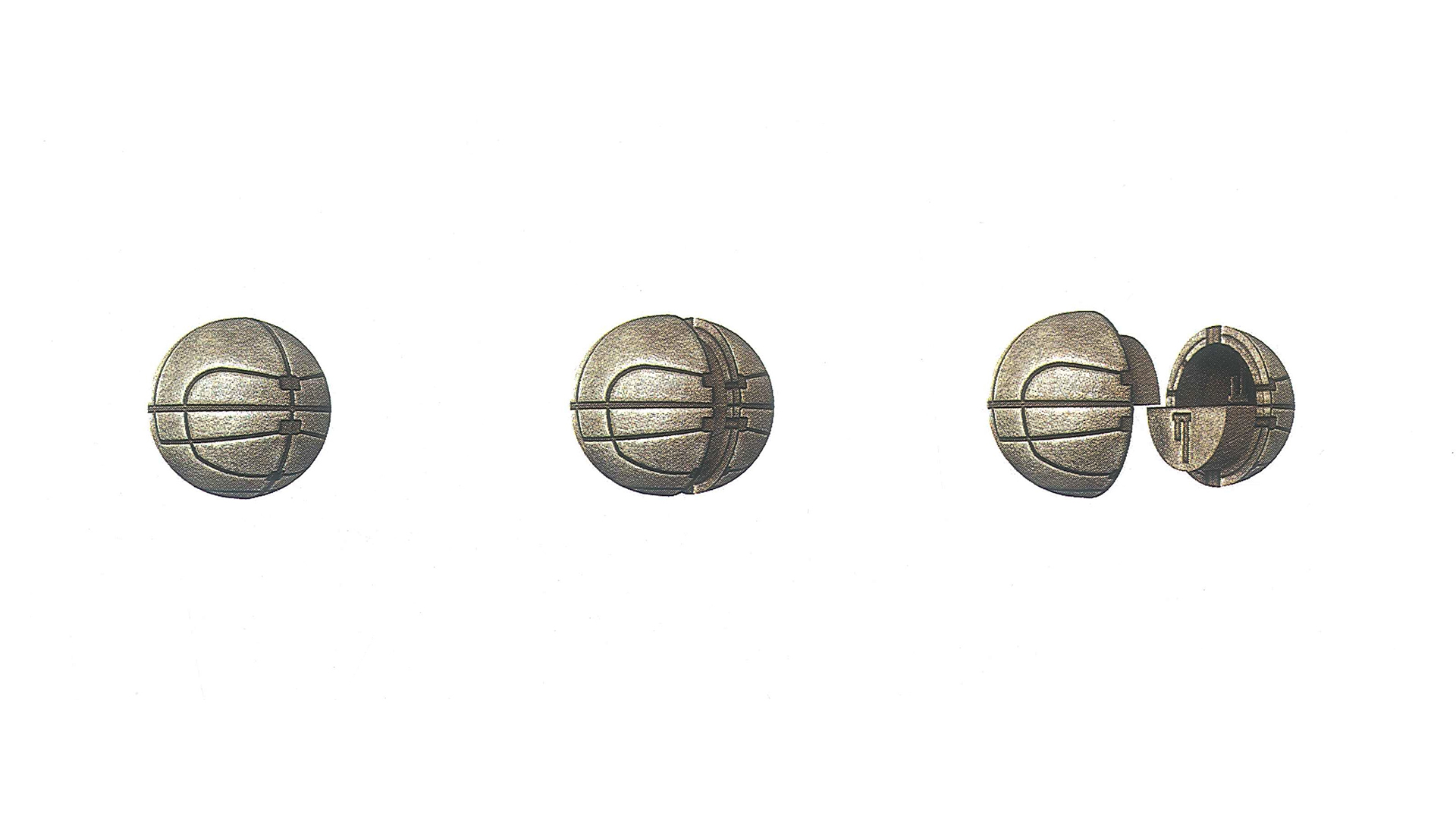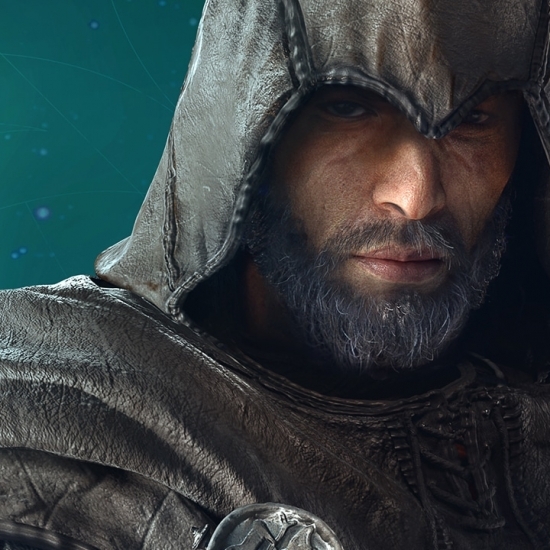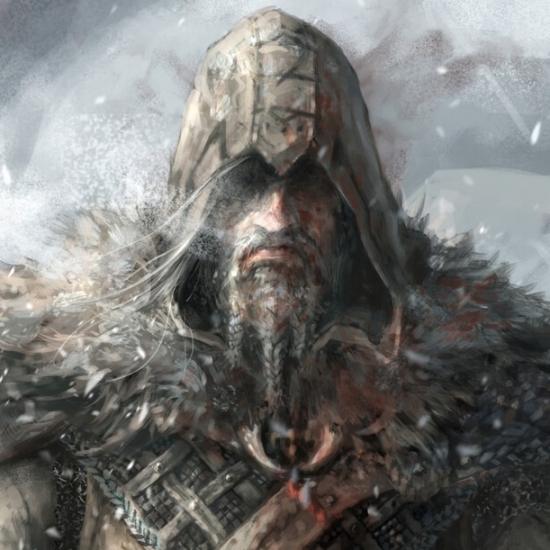TIES
Since the early promotional images of Assassin’s Creed: Origins were revealed, so many lines can be drawn between Origins and the first Assassin’s Creed. From the first key art of Bayek, his posture and his missing ring finger to setting the foundations of the brotherhood like his successor, Altair Ibn-La’Ahad, The Reformer, it became quite obvious that the highly anticipated next installment of the Assassin’s Creed franchise is trying to recapture the feel of the original game. Director Ashraf Ismail himself told me that this was the intention when I told him how beautiful Bayek’s render was and how much it reminds me of Altair’s promotional artwork.
The game is focusing on the Creed and what inspired the creation of every element that we’ve come to know about the franchise, such as the Assassin Insignia, the creation of the Hidden Blade, which is officially confirmed that will be shown/explained in the game, the necessity to remove the ring finger of the user of the Hidden Blade in order to facilitate its use, the presence of a connective thread between the amputated finger’s sheath and the hidden blade which allows the user to eject the blade which is similar to the mechanism by which Altair “activated” his own Hidden Blade, and there’s also the initial phase of the Assassin hood which originally was a head scarf that Bayek wore, likely to keep away the sun and cover his face from sandstorms when necessary, since he lived in Egypt and roamed the deserts where the temperature is high and sandstorms are merciless, which was likely adopted by the Assassins later to become an essential element of the Assassin attire and to be used to conceal the identity of its wearer.
While Bayek is certainly not the first Assassin, and the brotherhood has existed since the times of Adam and Eve, in different shapes and forms and under different titles, yet Bayek, along with his companion eagle and second pair of eyes, Senu, played a pivotal role in forming the brotherhood and setting its cornerstones in the shape and form we know it by since we first explored the holy land with Altair.
THE FIRST MENTOR
The first Assassin’s Creed introduced us to the wise and powerful mentor of the Assassin Brotherhood, Rashid ad-Din Sinan, also known as Al Mualim or The Old Man of the Mountain (which is also the real life founder of Al-Hashashin who are the real life inspiration for the Assassins). While things took a dark turn when the mentor himself got corrupted by the desire to own the Apple of Eden and aimed to use it to take away the very thing that the Assassins fight for, free will, in order to achieve peace and order, the name Al Mualim (which is the Arabic translation for The Teacher) was apparently adopted is the title of the Assassin mentors in Arab lands over the following centuries.
In the last moments of Assassin’s Creed: Unity’s Dead Kings chapter, Arno Dorian orders the POE he found to be delivered to Al Mualim in Cairo, Egypt, who is the Assassin mentor of the region.
Since Bayek is the founder of the Assassin Brotherhood who inspired numerous teachings to generations upon generations ahead, he’s likely to also be considered the first mentor. Of course, he cannot be named “Al-Mualim” because it’s an Arabic word and Arabic originated from Nabateans who lived in modern day Jordan from the second century BCE who wrote in cursive Aramaic letters and it was only until the 4th century BCE that early traces of Arabic alphabet could be traced back, in the region.
It must be noted that early concept arts of Al Mualim featured an owl on his shoulder and later replaced with an eagle, but those were eventually scrapped. However, Al Mualim is seen interacting with homing Pigeons who deliver letters back and forth between him and likely other Assassin groups within the holy land.
THE FORBIDDEN FRUIT
Also known as the Apple of Eden, one of many devices and technology created by the precursor race, the Isu. After the demise of the First Civilization and almost every trace of their existence, these devices were scattered all over the world for humanity to discover later, exchanging hands from one wielder to another, and often causing the deaths of many over its possession.
The Apple has multiple capabilities, some are even unknown to the Isu themselves and were discovered later with trial and error. The Apple is mainly known to enthrall and control humans due to the presence of a receptor in the brain which the Isu put in humanity when creating them to ensure being docile and obedience to their masters. In addition to that, it can store knowledge within it, visual information recorded for its possessor to uncover.
The first appearance of the Apple was when Altair was tasked to claim it from Solomon’s Temple, and from then on, numerous Assassins and Templars came in contact with different Apples of Eden, among those is Ezio Auditore Da Firenze, who interacted with Isu member, Minerva who showed him various holograms, one of which shows a pharaoh enthralling the people with an Apple of Eden, which was the first evidence that at some point in Ancient Egypt’s history, Pharaohs possessed an Apple of Eden and used it to control their people and earn their allegiance.
With the reveal of the Apple of Eden Edition of Assassin’s Creed: Origins, it cast aside all doubts regarding the presence of the Apple in Assassin’s Creed: Origins. Most discovered Apples of Eden don’t have a fully documented history, except for the names of several holders. There are five Apples of Eden in addition to Ezio and Aguilar’s Apples and several more unidentified ones.
Altair Ibn-La’Ahad came in possession of the second Apple of Eden which was previously hidden in the catacombs of Solomon’s Temple, in Jerusalem. It is unknown who delivered the Apple to Solomon’s Temple, but since this Apple is quite similar in design to the one shown by the leaked image from the Apple of Eden Edition of Origins, and due to the proximity between Egypt and Jerusalem, it is likely that the Apple which will likely appear in Origins is the same Apple Altair and Malik Al-Sayf found in Solomon’s Temple. The parallels and connections between the first game and Origins likely support the idea that perhaps at the end of the game, Bayek will come in contact with the Ark of the Covenant (where the Apple was stored in the first game) and order it to be sent and hidden in Solomon’s Temple.
 RINO THE BOUNCERPharmacist. Visual Artist. Ubisoft Star Player, Assassin's Creed Brand Ambassador, Founder and Community Leader of The Codex. Tomb Raider Localization Ambassador and Official Fansite Founder.NEWS FEEDTestimonial"Just stumbled across this site after looking at some topics on the Ubisoft Forums, this is great! Exactly the thing I was looking for.""Your site lays everything down in an interesting and easy to read format, even I learn new things whilst reading your articles!""This needs more than just 5 stars!""There is only one word AMAZING!!!!!!! GREAT WORK.""Very in depth and very well thought out! Keep up the good work!"One of the best (if not the best one) AC community pages out there. Keep up the good work!
RINO THE BOUNCERPharmacist. Visual Artist. Ubisoft Star Player, Assassin's Creed Brand Ambassador, Founder and Community Leader of The Codex. Tomb Raider Localization Ambassador and Official Fansite Founder.NEWS FEEDTestimonial"Just stumbled across this site after looking at some topics on the Ubisoft Forums, this is great! Exactly the thing I was looking for.""Your site lays everything down in an interesting and easy to read format, even I learn new things whilst reading your articles!""This needs more than just 5 stars!""There is only one word AMAZING!!!!!!! GREAT WORK.""Very in depth and very well thought out! Keep up the good work!"One of the best (if not the best one) AC community pages out there. Keep up the good work!

